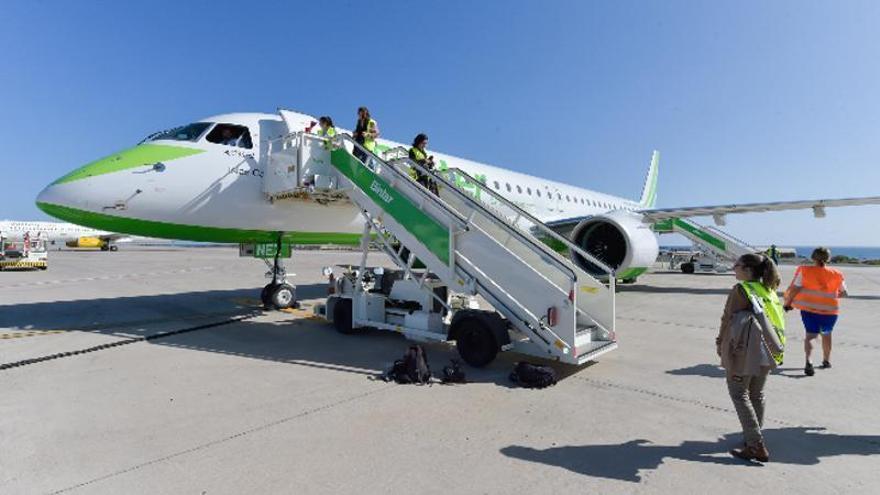
Over the past five years, the spending by Canary Island tourists has soared in destinations directly connected by Binter. Asturias is the clearest example of this trend. In 2020, the Canarian airline included the Principality in its offerings, leading to a more than doubling of investments by islanders in visiting that autonomous community (145%).
This conclusion stems from the real-time study Analysis of National Tourist Flows recently presented by BBVA Research. A similar scenario to Asturias can be observed in Cantabria, connected to the archipelago since 2020. The spending by Canarians in the northern region increased by 120% between the first four months of 2019 and the current year.
Giancarlo Carta, senior economist at the bank’s research department, notes that the growth in values is not attributed to a single factor. “Obviously, the more connected you are, the more intense the trend,” he explains. However, other factors such as the widespread price growth cycle also play a role in determining the magnitude of the increase.
Increased Card Usage
[–>
Another factor that helps explain the significant advancement is the use of card payments by BBVA’s Canarian customers only. Carta suggests the influence of a hypothetical growth in the “trend of using cards for payments” in recent years. While this aspect was not analysed in the study, it is a commonly observed trend. Since the outbreak of the pandemic, cash usage in payments has significantly decreased.
With all the nuances considered, the study confirms the changing travel trends of Canarians in line with the expansion of destination offerings. Binter first launched flights to Murcia in 2019 leading to a 92% increase in spending; Pamplona saw a 66% increase in the same year; in 2020, Jerez was added, and in the previous year, Granada, resulting in a 51% rise in travel expenditure by islanders in Andalucia.
Flights to Murcia since 2019 have seen a 92% increase in spending
[–>
Is there reciprocity in the opposite direction? The largest spending growth in Canarias over the past five years has been driven by Navarreans (69%), Andalusians (59%), and Asturians (25%), all within a context of growth in the mainland market as a source of tourists travelling to the islands. No autonomous community regressed; all contributed more significantly in terms of expenditure than their residents did between January and April 2019. Overall, expenditure by residents of the rest of Spain in the archipelago grew by 49%.
Decline in Interest
Conversely, there are mainland destinations that have lost appeal among islanders. Not significantly or permanently. Nevertheless, the shift in focus to highlight the new offerings by Binter has eroded the expenditures made by Canarian travellers in Catalonia (-17%) or Madrid (-2%); similarly, foreign destinations have faced a 3% decline.
Carta’s findings also suggest a cooling off of spending in recent times. Excluding the months of March and April due to the distortions caused by the Holy Week effect –celebrated in April last year and in March this year–, January and February saw declines of 6%.
Overall, in the first four months, there was a 4% decline compared to the same period in 2023, the largest in the country alongside those experienced by Madrid and Catalonia, both also at 4%. However, this deceleration does not indicate a downturn in the accommodative activity, just an expected correction.
5,738 flights during the long weekend
Between yesterday and Sunday, a total of 5,738 take-offs and landings are scheduled at the Canary Islands’ airports. Saturday will witness the highest concentration of operations, with a total of 1,242 flights; followed by Sunday, when AENA will handle 1,185 aircraft. This planning is due to the fact that the Canary Islands Day falls on a Thursday, which encourages taking Friday off, creating a long weekend where, for the fortunate ones, the week ended yesterday. Among the airports, Gran Canaria expects the most operations (1,702), followed by Tenerife-Norte (1,069). Combining the latter with the 983 operations at Tenerife Sur makes the island of Tenerife the most active, with a total of 2,052 take-offs and landings. Lanzarote follows with 912 operations, with Fuerteventura at the bottom with 631 operations. In terms of daily and island activity intensity, Gran Canaria will have its busiest day on Saturday (361 operations), similarly for Tenerife (444 between the two airports) and Fuerteventura (164). Sunday will be the busiest for Lanzarote (202). | J. G. H.
Subscribe to continue reading
















